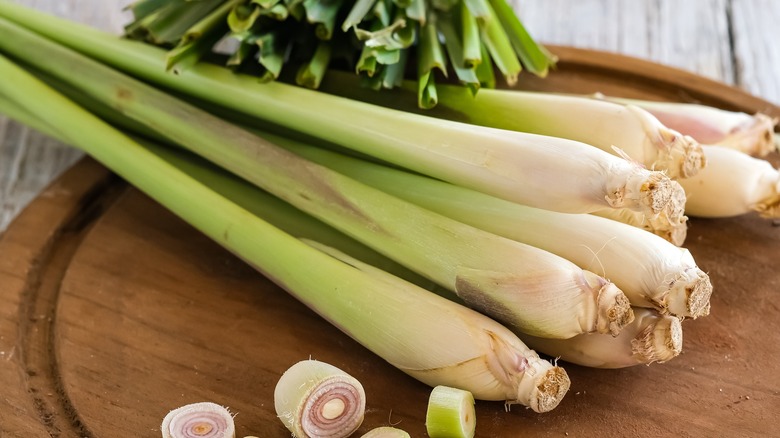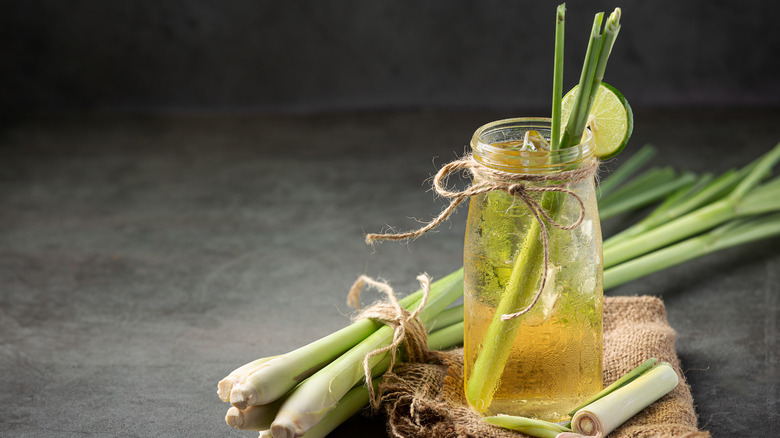What To Do With Lemongrass Stalks
How great is lemongrass? Ask any herbal tea fan – we're sure they'd love to tell you all about it. Nite Yun of Nyum Bai restaurant in Oakland says lemongrass is used in roughly 95% of Cambodian dishes, via Bon Appétit. It's also a popular ingredient in Thai cuisine.
The aromatic is indigenous to India and tropical parts of Asia, per Organic Facts, and is beloved for its potent lemon flavor and strong herbaceous fragrance. Not only do lemongrass' naturally unique taste and smell make it popular in aromatherapy, but based on Ayurvedic medical applications, animal studies, or other research, it might boast a dizzying array of medicinal benefits. The herb may help remedy digestive and respiratory problems, insomnia, or anxiety. It could possibly detoxify the body, lower cholesterol levels, or reduce fevers. It even has antibacterial and antifungal qualities that might fight off infections and colds, kicking the immune system into high gear.
In the culinary world, lemongrass is commonly paired with ingredients like garlic, ginger, cilantro, shallots, coconut leaves, and Thai basil. However, the bulbs (which grow attached to pale green stalks) are the only edible part. In most recipes, says America's Test Kitchen, the only parts of lemongrass that get used are the leaves from the stalk's lowermost 4 to 5 inches. But there's no need to toss the rest in the trash. Here's how to put those lemongrass stalks to good use.
Infuse your way to flavor
To get the most out of that lemongrass stalk, use the side of a chef's knife to crush and flatten the stalk before tossing it in your stock pot; it'll unlock the flavors. Or, The Spruce Eats recommends another technique. Use a serrated knife to make a series of slices along the length of the stalk, without cutting all the way through, then use both hands to bend it all over the place (not dissimilar to cracking a Glow Stick).
From there, simply add those stalks to soups, curries, sauces, or slow-roasted meats, says Bon Appétit. Lemongrass is so potent that even if you aren't physically chewing and swallowing it, all it takes is a little infusion to make itself known. Any preparation that involves a long, slow simmer will bring out that signature flavor. (Just be sure to take it out before serving.)
Lemongrass stalks can also be an unexpected darling for garnishing cocktails. Stick one in a highball glass and take your vodka lemonade to the next level. Gin would also provide an attractive fit for herbaceous lemongrass; pop a stalk in your French 75 recipe and even add other complementary flavors to the mix, like a splash of pear juice and a sprig of fresh rosemary. If you still can't get enough, America's Test Kitchen says you can do the old "green onion trick" with lemongrass: Just place the stalk in a few inches of water and it'll regrow.

